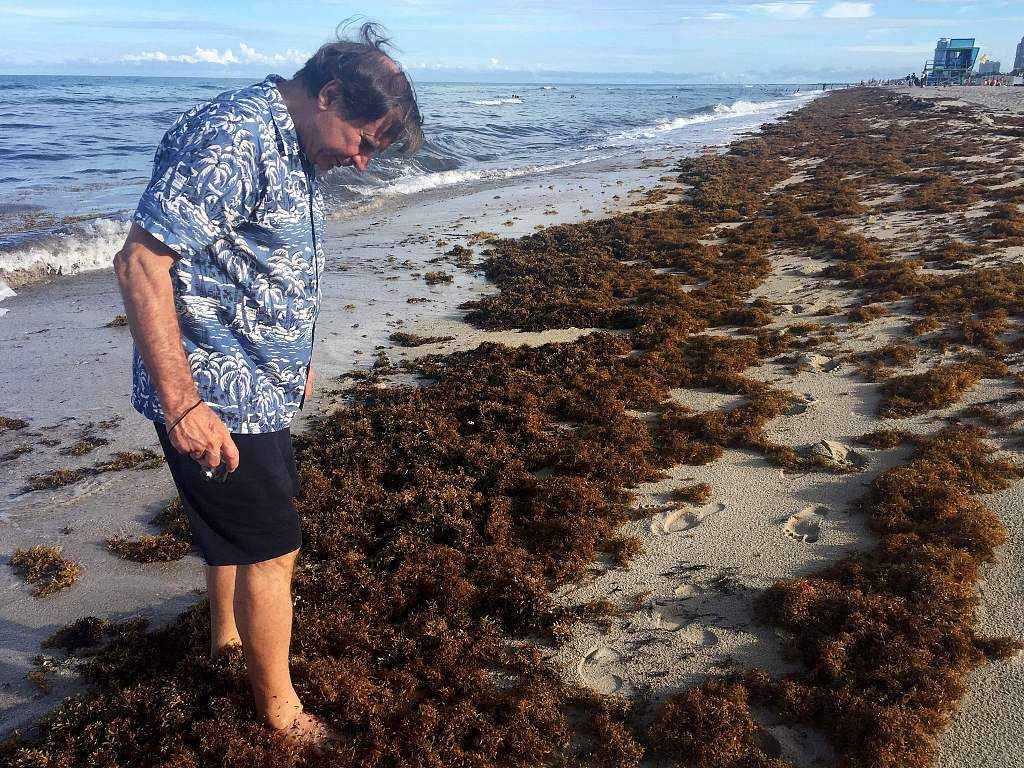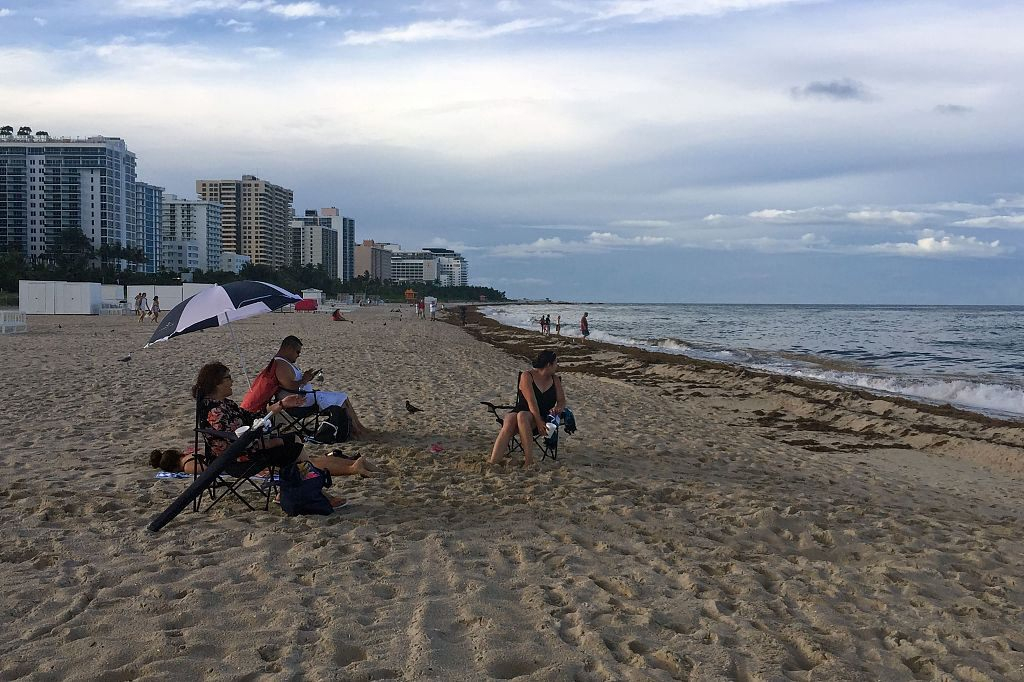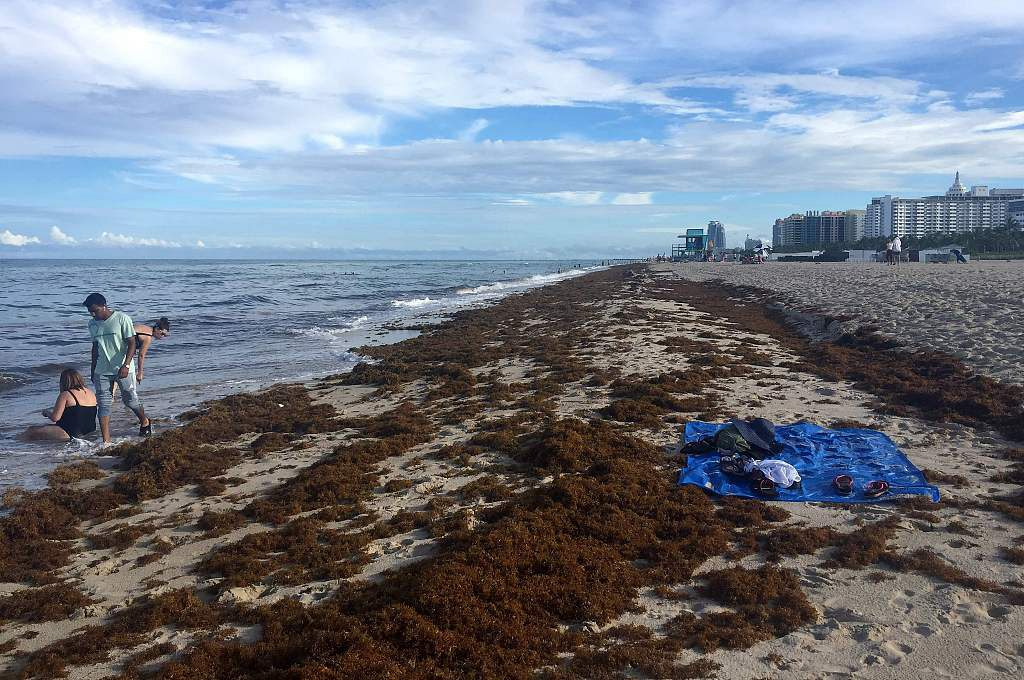

Slimy, stinky brown seaweed that ruins beachgoers' vacations from Mexico to Florida may be the new normal unless Brazil halts Amazon deforestation, experts say.
The culprit, called sargassum, turns clear-blue sea water a murky brown and smells like rotten eggs when it washes ashore and starts to rot.
The seaweed is a natural occurrence on beaches in the Caribbean and elsewhere. It's part of an ecosystem for fish, crabs and birds.

Steve Leatherman, known as "Dr. Beach," examines the stinky seaweed on the beach of Miami in Florida. /VCG Photo
But it has proliferated dramatically in recent years, covering shores with thick layers of the weed and forcing tourism officials to clean it up so visitors keep coming.
It is an icky nuisance for tourists but also an economic and environmental disaster.
One problem is global warming - the hotter the ocean, the more these weeds reproduce, said Steve Leatherman, an environment expert at Florida International University. But the bigger problem is the Amazon River, he added.

The large amount of seaweed is upsetting tourists. Miami authorities have used heavy machinery to remove it from the beaches. /VCG Photo
Scientists say that starting around 2011, much more land along that mighty waterway was cleared for farming. But it yields a poor, muddy red soil so farmers use a lot of fertilizer, which rains wash into the river, where it flows into the Atlantic. And the fertilizer ends up fertilizing the sargassum.
"Now there are 20, or 30, 50 times more, 100 times more than we've ever had before," said Leatherman.
'Environmental disaster'
The pernicious effects are many: fishing boats have trouble starting their engines. Beaches are disgusting for tourists. Fish choke because the seaweed absorbs too much oxygen. Turtles struggle to find a place to lay eggs. When they do, the babies cannot make it from the shore out to sea. And dead seaweed sinks, smothering coral reefs.

Sargassum seaweed covers the shore of Miami Beach, Florida, U.S., August 1, 2019. /VCG Photo
In the British Virgin Islands, the layer of seaweed is two meters thick. Punta Cana, a beach in the Dominican Republic that is famous for its clear water, has turned brown. Barbados recently declared a national emergency. Mexico has called in the navy to restore the beauty of tourist hub Cancun.
A study published in July by the University of South Florida in the journal Science concluded that the seaweed problem, which started in 2001 and showed peaks in 2015 and 2018, is here to stay since there is continued nutrient enrichment due to deforestation and fertilizer use in agriculture.
(Cover image via VCG)
(If you want to contribute and have specific expertise, please contact us at nature@cgtn.com)

Copyright © 2018 CGTN. Beijing ICP prepared NO.16065310-3
Copyright © 2018 CGTN. Beijing ICP prepared NO.16065310-3